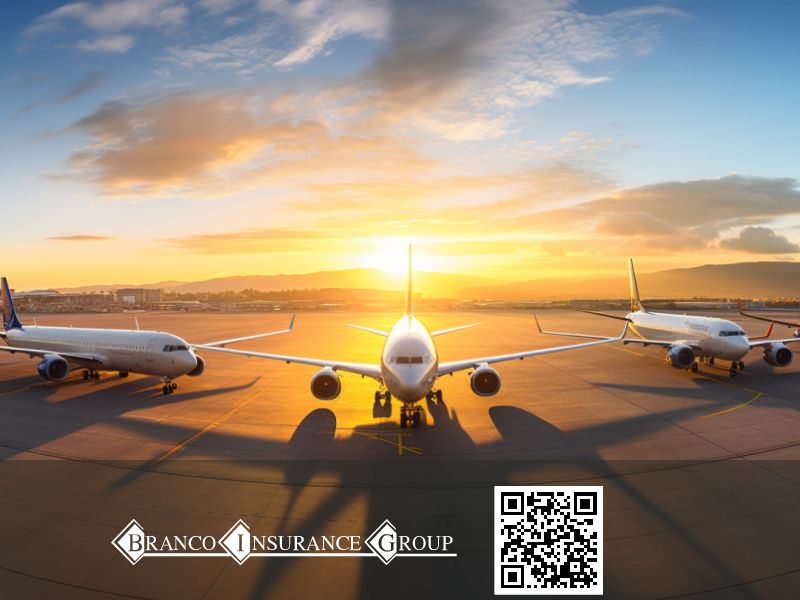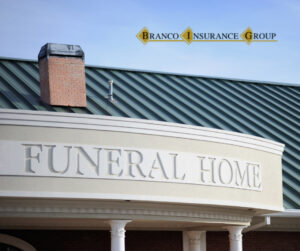Owning an aircraft means navigating the risks of potential accidents and damages. You may not realize that, just like cars, airplanes require their own insurance! This blog will guide you through the crucial details of Aircraft Liability Insurance – an indispensable tool to safeguard any air vehicle owner from financial hardships due to unforeseen incidents.
Ready? Let’s dive in and demystify aviation protection together!
Key Takeaways
- Aircraft Liability Insurance provides coverage for an owner’s losses due to damages or injuries, including bodily injury and property damage claims.
- Having this insurance protects against costly legal defense and damages, providing peace of mind in case of accidents or incidents.
- The type of aircraft being insured, the insured’s experience and record, and the coverage limits and deductibles chosen can affect premiums. Compliance with aviation regulations is necessary to ensure coverage.
What is Aircraft Liability Insurance?
Aircraft Liability Insurance provides coverage for an owner’s losses due to damages or injuries, insuring against liability for bodily injury or property damage.
Coverage for owner’s losses due to damages or injuries
Aircraft Liability Insurance deals with a lot of things. One big part is that it helps cover an owner’s losses if there are any damages or injuries. Imagine your plane causes harm to a person or wrecks someone’s property on the ground, this insurance will protect you from paying all the money needed for those incidents.
It also helps in strange cases like false ads claims and even nasty words being said about you (libel and slander). Even if a passenger gets hurt during the flight or sadly passes away, Aircraft Liability Insurance takes care of it.
This policy makes sure the owner does not carry heavy money loss due to these risky events linked with owning and running an aircraft.
Insures against liability for bodily injury or property damage
Aircraft liability insurance is a big friend to those who run aircraft. It will pay if there are any claims for harm to others or damage to their things because of the airplane. Accidents can happen anytime with planes, so having this type of insurance is very smart.
This kind of insurance gives protection that may reach up to $500 million. So it covers many costs if anyone gets hurt or property gets damaged due to an accident with the plane that you own or use.
Having such a huge limit helps because medical care and repair work can be costly.
Why Have Aircraft Liability Insurance?
Aircraft Liability Insurance is necessary to protect against costly legal defense and damages, provide peace of mind in case of accidents or incidents, and may even be required by law or regulatory bodies.
Protects against costly legal defense and damages
Aircraft liability insurance keeps your money safe. If you get sued because of an accident, the legal costs can be high. Going to court is not cheap. Your insurance pays for these costs, so you don’t have to.
It also pays if a court says you must pay damages for injuries or property damage caused by your aircraft. This helps avoid big hits to your pocket from such events.
Provides peace of mind in case of accidents or incidents
Aircraft liability insurance provides peace of mind to aircraft owners, pilots, and businesses. It offers financial protection in case of accidents or incidents involving their aircraft.
This means that if there is damage to the aircraft itself, theft, or liability claims for bodily injury or property damage caused by the aircraft, the insurance will cover these costs.
With this coverage in place, individuals and companies can have peace of mind knowing that they are protected from potentially significant financial loss resulting from accidents or incidents related to their aircraft.
May be required by law or regulatory bodies
Aircraft Liability Insurance may be required by law or regulatory bodies to ensure the safety and financial protection of stakeholders. While there are no federal or state regulations mandating aircraft insurance, under federal law, the Secretary of Transportation is responsible for ensuring that commercial air carriers carry liability insurance.
For example, 14 CFR Part 205 outlines the rules for aircraft accident liability insurance coverage required by U.S. direct air carriers to obtain or exercise authority. Additionally, although not mandatory, Fixed Base Operators (FBOs) usually require aircraft to be insured for facility usage.
It’s important to understand that insurance requirements for aircraft can be influenced by legal and regulatory bodies as a means of safeguarding against potential risks in the aviation industry.
Coverage Levels and Types of Aircraft Liability Insurance
Aircraft Liability Insurance offers two main types of coverage: Combined single limit insurance, which provides a set amount for both bodily injury and property damage claims, and sub-limit insurance, which sets separate limits for bodily injury and property damage claims.
Combined single-limit insurance
Combined single-limit insurance is a type of aircraft liability insurance that provides coverage for both bodily injury and property damage under a single limit of liability per occurrence.
This means that there is no separate maximum amount for each category, making it the broadest coverage available. The specific coverage levels can vary depending on the insurer and policy terms.
It’s important to note that most aircraft insurance policies also contain liability sub-limits, which specify the maximum coverage for bodily injury and property damage.
Sub-limit insurance
Sub-limit insurance sets a maximum amount that the insurer will pay for certain types of claims. This can vary depending on the type and coverage level of the aircraft liability insurance.
Without sub-limits, the coverage for property damage or bodily injury claims can be up to $1,000,000. For example, in light aircraft aviation insurance, insurers have sub-limits for bodily injury claims.
This determines the maximum amount they will pay for each passenger’s claim. Liability coverage sub-limits are common in aircraft insurance policies.
Factors Affecting Aircraft Liability Insurance Premiums
Several factors can affect the premiums for aircraft liability insurance, including the insured’s experience and record, the type of aircraft being insured, and the coverage limits and deductibles chosen.
Experience and record of the insured
The experience and record of the insured can affect how much they pay for aircraft liability insurance. Insurance companies may offer lower premiums to pilots who have additional ratings or certifications.
The number of flight hours and experience with the specific make and model of the aircraft being insured can also impact the premiums. Safety and training are important factors that insurance companies consider when determining how much to charge for coverage.
So, having a good track record and following proper safety protocols can help in getting more affordable insurance.
Type of aircraft being insured
The type of aircraft you want to insure is an important factor that affects the cost of your aircraft liability insurance. Insurance companies consider the make and model of the aircraft when determining your premium.
If you have experience in flying a specific make and model, it can actually lower your insurance costs. So, whether you own a small single-engine plane or a larger commercial jet, the type of aircraft you have will impact how much you pay for insurance coverage.
Coverage limits and deductibles
The coverage limits and deductibles are important factors when it comes to aircraft liability insurance. These determine how much protection you have and how much you will need to pay out of pocket in case of a claim.
The coverage limits refer to the maximum amount that the insurance company will pay for any damages or injuries that occur. On the other hand, deductibles are the amount that you will need to pay before your insurance coverage kicks in.
It’s important to carefully consider these limits and deductibles when choosing your policy, as they can affect both your premiums and your level of financial protection.
Conditional Requirements for Aircraft Liability Insurance
Conditional requirements for aircraft liability insurance vary by country and jurisdiction. Compliance with aviation regulations is necessary to ensure coverage. To learn more about these requirements and how they can impact your liability insurance, read on.
Vary by country and jurisdiction
Liability insurance requirements and premiums for aircraft owners can vary depending on the country and jurisdiction. Different countries have their own regulations and policies when it comes to aviation insurance.
This means that the specific conditions, coverage limits, deductibles, and other factors may differ from one place to another. It’s important for anyone interested in buying aircraft liability insurance to familiarize themselves with the jurisdictional requirements that apply to them.
This will ensure they obtain the right coverage according to local laws and regulations.
Compliance with aviation regulations
Complying with aviation regulations is essential when it comes to aircraft liability insurance. Different countries and jurisdictions have their own specific requirements for coverage.
In the United States, for example, direct air carriers need to meet the rules set out in 14 CFR Part 205 to obtain or maintain authority from the FAA. Licensed air carriers are typically required to have liability insurance that covers bodily injury and property damage.
Meeting these regulations is vital for maintaining the necessary legal standing and ensuring proper coverage in case of accidents or incidents.
Benefits of Aircraft Liability Insurance
Aircraft Liability Insurance provides financial protection in case of accidents or incidents, covers legal defense costs, and offers peace of mind for aircraft owners and operators.
Financial protection in case of accidents or incidents
Aircraft liability insurance provides financial protection in case of accidents or incidents involving an aircraft. This means that if there is damage to the airplane or any injuries to passengers, the insurance will help cover the costs.
It also provides coverage for any damage caused to public property or other people’s belongings due to an aircraft’s actions. This type of insurance is important because accidents can happen, and the costs associated with legal defense and damages can be very high.
Having aircraft liability insurance gives owners and operators peace of mind knowing that they are protected financially in case something goes wrong.
Coverage for legal defense costs
If you have Aircraft Liability Insurance, it can help cover the costs of legal defense. This means that if someone files a lawsuit against you for bodily injury or property damage caused by your aircraft, the insurance company may pay for the fees of defense attorneys and other legal expenses.
So instead of having to bear these costs yourself, your insurance policy can provide financial protection in case you need to defend yourself in court. It’s important to note that coverage for legal defense costs is a valuable benefit offered by many aircraft liability insurance policies.
Peace of mind for aircraft owners and operators
Aircraft liability insurance provides peace of mind for aircraft owners and operators. It ensures that they are financially protected in case of accidents or incidents, allowing them to focus on flying without worry.
With this insurance coverage, they can have confidence in knowing that any potential liabilities, damages, or legal consequences will be taken care of. This brings a sense of security and allows them to fully enjoy their aviation activities while having the necessary financial protection in place.
Non-Owned Aircraft Liability Insurance
Provides coverage for corporations and individuals who do not own the aircraft, protecting against bodily injury and property damage liability.
Coverage for corporations and individuals not owning the aircraft
Non-Owned Aircraft Liability Insurance is designed to provide coverage for corporations and individuals who do not own the aircraft but may still be legally responsible for any bodily injury or property damage caused by the aircraft.
This type of insurance policy ensures that you are protected in case someone gets hurt or there is damage to their property as a result of the aircraft. It covers bodily injury, including passengers, as well as property damage and medical expenses.
So even if you don’t own an aircraft yourself, you can still purchase this insurance to make sure you have the necessary coverage in case something goes wrong.
Protection against bodily injury and property damage liability
Non-Owned Aircraft Liability Insurance provides protection against bodily injury and property damage liability. This means that if someone gets hurt or their property is damaged, you are covered for the costs associated with it.
For example, if a passenger on your aircraft gets injured during a flight, the insurance will cover their medical expenses. It also covers damage to other people’s property, such as cars or buildings.
Additionally, Non-Owned Aircraft Liability Insurance includes coverage for legal defense costs in case of a liability claim. So, you can fly with peace of mind knowing that you are financially protected in case of accidents or incidents involving bodily injury or property damage.
How to Obtain Aircraft Liability Insurance
To obtain Aircraft Liability Insurance, individuals can contact a reputable aviation insurance broker, provide necessary information and documentation, and compare quotes and coverage options.
Contact a reputable aviation insurance broker
To obtain aircraft liability insurance, it is important to contact a reputable aviation insurance broker. They have the expertise and knowledge to guide you through the process and help you find the right coverage for your needs.
By working with an experienced broker, you can ensure that you receive specialized underwriting and expert advice. A trusted insurance company like AIG offers comprehensive coverage options and a 24/7 Aviation Claims Hotline for any assistance you may need.
So, reach out to a reliable broker who can provide you with the necessary information and guidance to obtain the aircraft liability insurance that suits your requirements.
Provide necessary information and documentation
To obtain aircraft liability insurance, you’ll need to provide some important information and documentation. Start by contacting a reputable aviation insurance broker who specializes in this type of coverage.
They will guide you through the process and help you find the right policy for your needs.
When speaking with the broker, be prepared to share details such as your experience and record as an aircraft owner or operator. This includes any previous accidents or incidents, as it may affect your premiums.
You’ll also need to provide information about the type of aircraft you own or operate, including its make, model, and age.
In addition to personal details, you may be asked about coverage limits and deductibles that you prefer. It’s helpful to have an idea of what level of protection you’re looking for before reaching out to insurers.
Compare quotes and coverage options
When looking to obtain aircraft liability insurance, it is important to compare quotes and coverage options. Different insurance providers offer different policies with varying levels of coverage and premiums.
By comparing quotes from multiple providers, you can ensure that you are getting the best value for your money. Additionally, reviewing the coverage options will help you understand what is included in each policy and choose the one that best suits your needs.
Keep in mind that factors such as the type of aircraft being insured and your experience as a pilot may affect the premiums offered by different companies. Therefore, taking the time to compare quotes and coverage options can help you make an informed decision when obtaining aircraft liability insurance.
Final Thoughts
Aircraft liability insurance is a must-have for anyone who owns or operates an aircraft. It provides coverage for property damage and bodily injury risks, giving peace of mind in case of accidents or incidents.
Whether required by law or not, having this insurance ensures financial protection and safeguards against costly legal defense. So, if you’re considering purchasing an aircraft, make sure to include aircraft liability insurance as part of your plan. If you still have questions about aircraft liability insurance or if you are looking for a quote, our insurance experts at Branco Insurance Group would love to help you. Contact our team today to get started.





